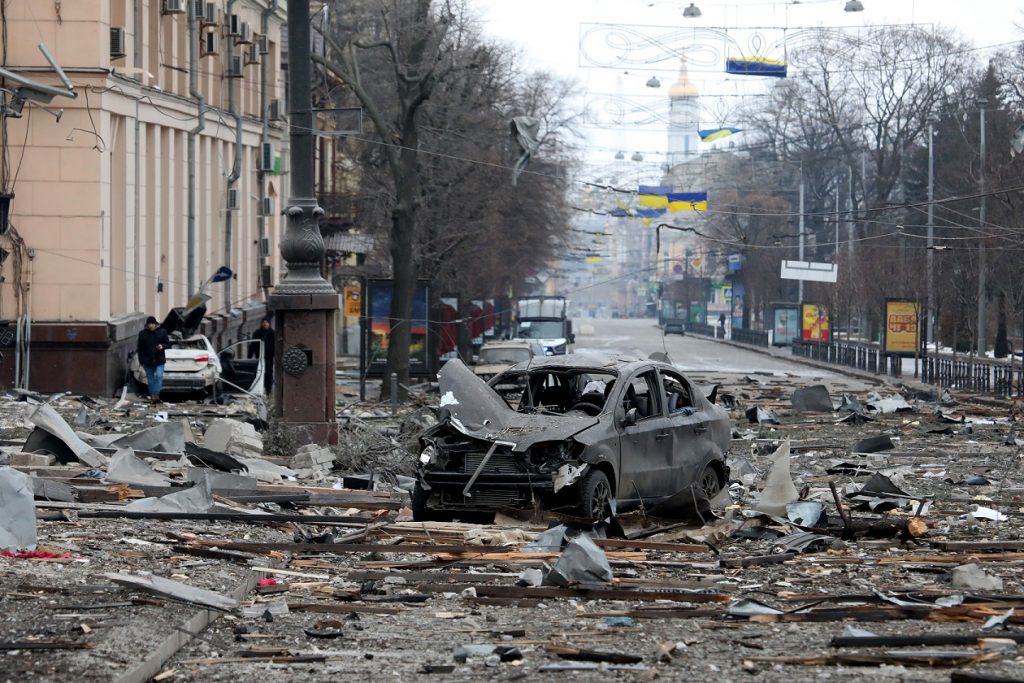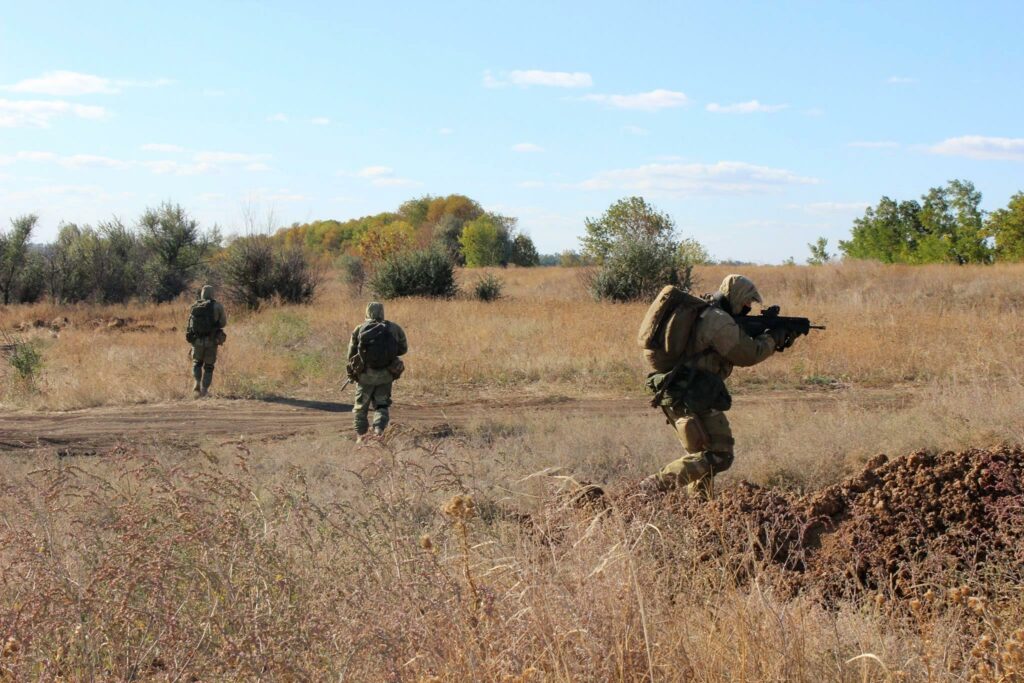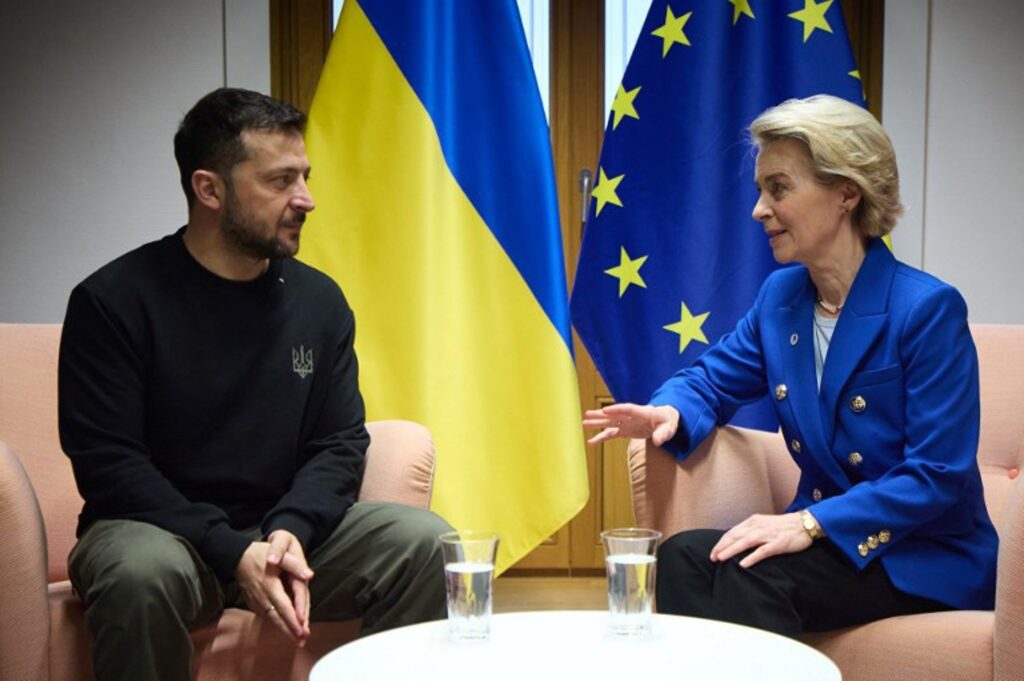In 2017, after returning from a sobering G7 summit with Donald Trump in Sicily, Angela Merkel concluded that Europe could no longer blindly trust the American alliance and must take its fate into its own hands.
Eight years later, on the eve of the third anniversary of the Russian invasion of Ukraine, the former German Chancellor’s prediction appears more relevant than ever. “Europe’s security is at a crossroads,” acknowledged her former protégé Ursula von der Leyen.
For three years, Europeans and Americans stood together in support for Ukraine. This joint effort helped Ukrainians fend off a complete military takeover and maintain some stability on the eastern front lines. However, Trump’s re-election as U.S. President has reshaped the situation drastically.
Just a month after threatening Russian President Vladimir Putin with tariffs and sanctions, Trump announced direct negotiations with Moscow and criticised Ukrainian President Volodymyr Zelenskyy. Washington made it clear that Ukraine must abandon its aspirations for NATO membership and the full restoration of its territorial integrity. Moreover, once a ceasefire is reached, it will be up to the Europeans to protect Kyiv from future attacks.
Trump’s exact intentions are unclear but the initial messages from Washington were not entirely unexpected. French President Emmanuel Macron urgently invited the leaders of the largest European countries to Paris for crisis talks. While troop deployment during a possible ceasefire remained a contentious issue, many participants stressed the indispensability of American military deterrence to guarantee Ukraine’s security.

Kharkiv at the start of the war. Credit: Belga
By Europe, for Europe
At the same time, there was a growing realisation that Europe must urgently close its defence gap and become a more autonomous security player. Zelenskyy promptly called for the development of “the armed forces of Europe.” Speaking at the Munich Security Conference, he emphasised that “Europe’s future should depend only on Europeans, and decisions about Europe should be made in Europe.”
But a European army is not yet up for discussion. National governments still decide whether to deploy their own forces, although many European capitals have come to believe that the EU should play a more significant role in defence policy. This includes coordination, investment funding, and strengthening the defence industry.
The European Commission will present a white paper on the strategy in March. In the meantime, finding consensus among Member States and making concrete decisions remains challenging. Should there be common debt to finance expensive defence projects such as a missile shield? Should European funds be used to purchase weapons from within Europe to bolster the local industry, as France advocates, or should a more pragmatic approach be taken, buying from allies like the United States?

Credit: Ministry of Defense of Ukraine
Whilst Slovakia and Hungary painted the Paris meeting as a gathering of “frustrated, pro-war, and anti-Trump leaders,” other Member States continue to support Ukraine firmly. A €35 billion loan, financed by blocked Russian assets, is set to cover Ukraine’s financial needs for the year. There is also a plan to use part of these funds for military aid.
Along with contributions from Member States, €6 billion could be mobilised to provide 1.5 million artillery shells, drones, air defence systems, and missiles this year. So far, the EU and its Member States have provided around €50 billion in military aid. Despite Trump’s manoeuvres, Member States again approved a package of sanctions against Russia this week.
When will push come to shove?
The sixteenth sanctions package does not include further phase-outs of Russian oil and gas. Since the invasion, Member States have significantly reduced their dependence on cheap Russian fossil fuels. An embargo on Russian seaborne oil has drastically limited imports, and gas imports via pipelines have significantly decreased.
However, countries like Hungary and Slovakia continue to import Russian gas through Turkey. Equally embarrassing is the continued import of LNG to Western Europe, which according to the Financial Times reached record levels last year. The Commission aims to present a roadmap for the final decoupling from Russian energy by the end of March.
In the long run, EU membership remains perhaps the most significant show of support for Ukraine. The country applied for membership immediately after the Russian invasion, and negotiations have already begun. Amid tumult over the US-Russia negotiations, Commission President Ursula von der Leyen assured Zelenskyy that the accession process would be accelerated.
Professor Sven Biscop argued in a commentary for the Egmont Institute that the EU must provide security guarantees. “Continuing the accession process without offering security guarantees essentially tells Ukraine that if Russia invades again, they will be left to fend for themselves. Yet, if they survive, the EU will pick up the membership application again.”
The conflict in Ukraine has already significantly influenced the EU’s foreign and security policy over the past three years. Ukraine’s accession would also radically transform the EU from within. Preparing for the membership of a large agricultural country with immense reconstruction needs will require substantial budgetary and financial reforms. Additionally, decision-making processes in the EU will inevitably need to be reconsidered, especially if Western Balkan countries seize the new enlargement momentum, potentially increasing the bloc’s size to over thirty Member States.

